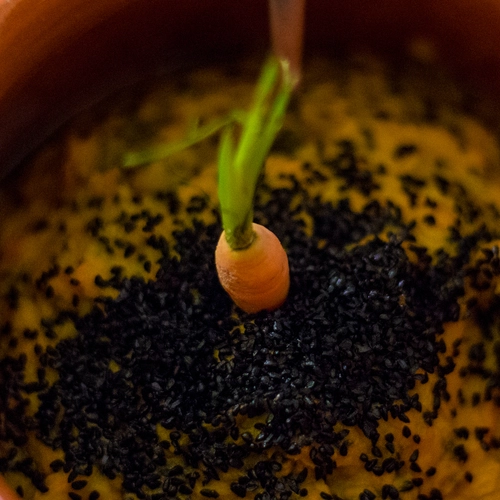Description
The nigella is a plant known both in the East and in the West since ancient times. The name of this plant (used for both seeds and oil taken from seeds) is translated into many languages (from English, to Bosnian, from Indian, to Egyptian), this certifies its widespread distribution. Traditional folk medicine was widely used and this is testified by numerous sources. One of them is the Arab doctor and philosopher Avicenna, who mentions her in his canon of medicine. Here the nigella has antifungal, antioxidant and anti-inflammatory functions. Now we also know that this plant that take part of the family "ranunculaceae" is full in omega 3 (which make a containment of triglycerides and prevent cardiovascular disease) and omega 6 too (useful in controlling cholesterol so called "bad").
Interesting considerations are given by Giuseppe Donzelli in his book "Dogmatic and spagyric pharmaceutical theater" (1677) which, quoting Dioscoride and Pier Andrea Mattioli (Sienese humanist of the first half of the 16th century, known for his commentary on the "De materia medica" di Dioscoride, first herbarium that we know) underlines the properties of nigella and let us know that in ancient Greece one of the names used was Melanthion, (p.278).
In the Journal of plant development sciences vol. 4(1) we read:
"In traditional system of medicine black cumin seeds are effective against cough, bronchitis, asthma, chronic headache, migraine, dizziness, chest congestion, dysmenorrheal, obesity, diabetes, paralysis, hemiplegia, back pain, infection, inflammation, rheumatism, hypertension, and gastrointestinal problems such as dyspepsia, flatulence, dysentery, and diarrhea. It has also been used as a stimulant, diuretic, emmenagogue, lactagogue, anthelmintic and carminative as well as it is applied to abscesses, nasal ulcers, orchitis, eczema and swollen joints. Seed oil is considered to be local anesthetic".
(https://www.researchgate.net/publication/268207519_Black_cumin_Nigella_sativa_L_-_a_review)

